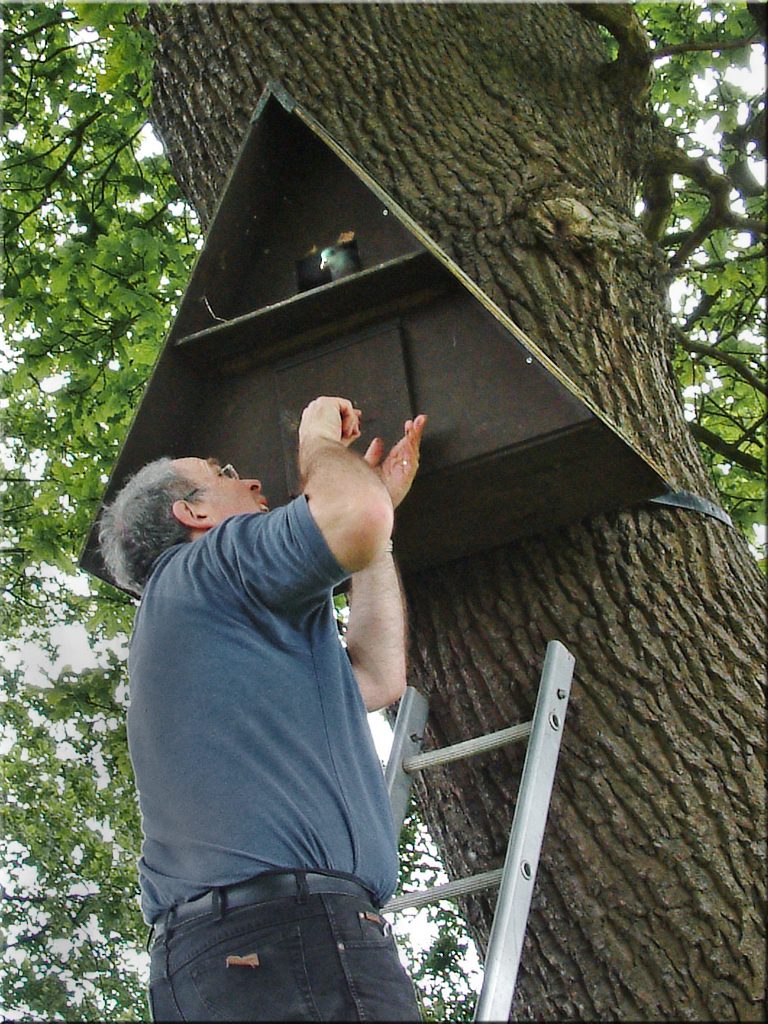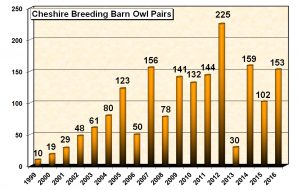What We Are Doing
-

Nest box checking. Even though there was a pigeon watching from above, there was a barn owl in the main compartment! Photo: Ian Jones
We have an enormous amount of work to do, including:
- Locate and protect existing breeding sites.
- Locate and develop existing suitable breeding sites, providing nest boxes if necessary.
- Maintain nest boxes. We have over 1000 nest boxes, they don’t last forever and we have to repair or replace those that decay.
- Encourage the creation or recovery of suitable habitats for hunting and breeding.
- Survey land planned for development so that developers can work to mitigate the impact on barn owls.
- Work together with any other organisation that has an impact on the conservation of barn owls.
- Record and follow up sightings.
- Monitor the population of barn owls in the Mid Cheshire area.
- Participate in reports beyond our area:
- In liaison with the other Cheshire groups participate in the annual “Cheshire Barn Owl Report”.
- At a national level we particpate in the “State of the UK Barn Owl Population” published by the Barn Owl Trust each year.
- Raise and maintain public awareness.
Progress so far
The number of breeding pairs in 2000 was recorded as 19 and appeared to have been an increase over previous years but the truth is that by then recording was more accurate due to the increasing network of recorders such as barn owl groups like ours and increased public awareness. Therefore we tend to consider 2000 and 19 breeding pairs as our starting point. At that time each pair produced an average of 2.2 fledglings. It has been calculated that an average of 2.65 fledglings per breeding pair are required to maintain stable barn owl population in Cheshire, so as things stood we could have expected the decline to continue. Along with other barn owl groups we embarked on a project to place nest boxes at appropriate locations and encourage the maintenance and creation of suitable habitat.
Progress was made and by 2003 there were around 30 breeding pairs of barn owls recorded in the county, 5 of them in Mid Cheshire. This was good but not yet good enough, a long dry summer or harsh winter could seriously reduce this number very quickly. Over the following years we continued our work and the barn owl population has continued to grow.

Roughly every 7 years there’s a naturall fall in breeding, however a strong population will quickly recover (click to see full size).
Now well into the 21st century the future does look brighter but threats remain. Weather conditions have already been mentioned as a major problem facing barn owls these days, another is the natural decline of field vole numbers which occurs roughly every 7 years. This staple of the barn owl diet means that in those years of reduced food supply breeding numbers are seriously reduced. We continue to work to ensure there is a good population that is able to cope with all of these natural threats.
- So despite the barn owl having had special protection under the Wildlife and Countryside Act 1981 the future of the barn owl in Cheshire remains difficult to predict and our work must continue.

Latest Comments